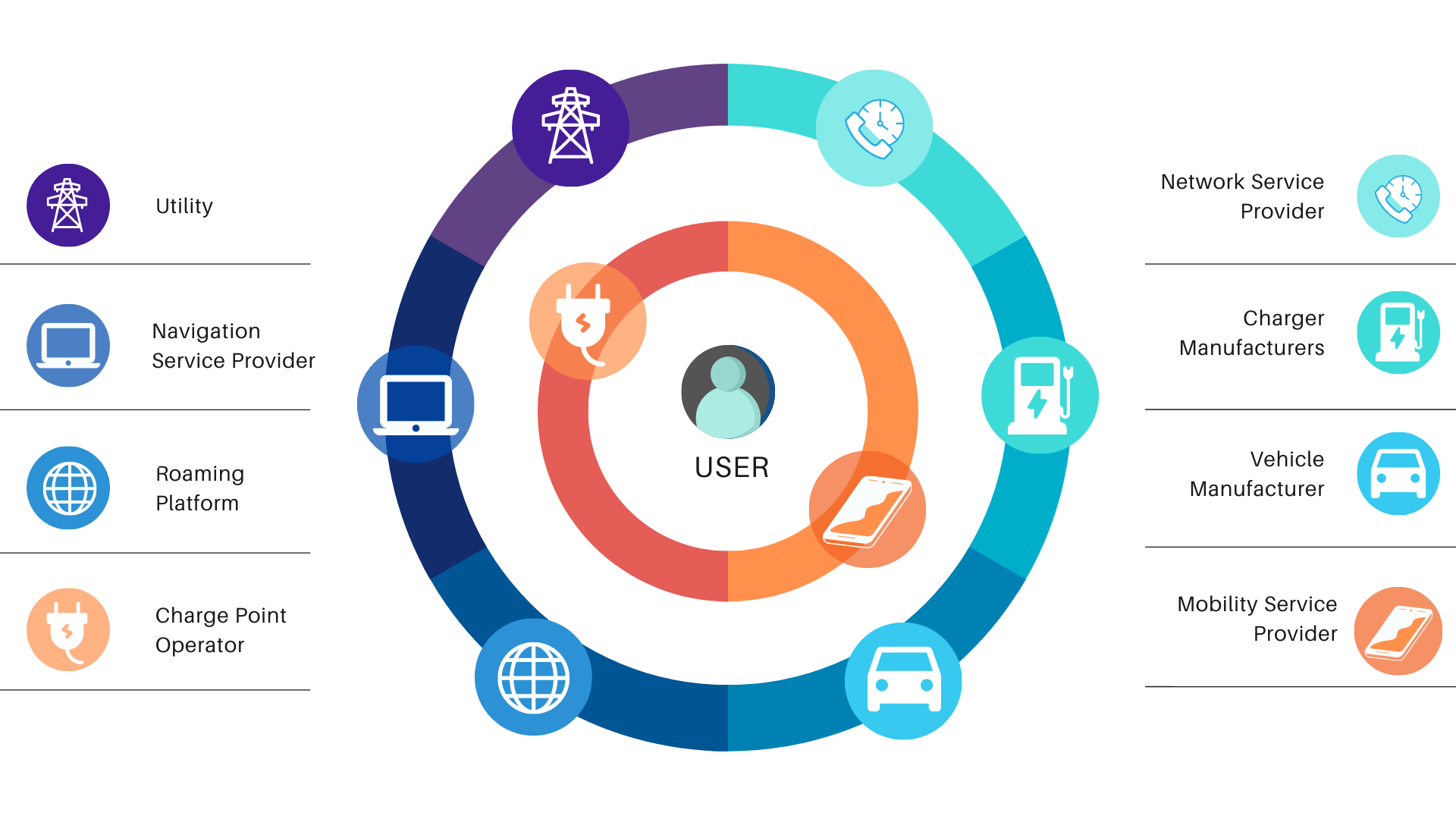The CEEW Centre for Energy Finance (CEEW-CEF) and eDRV have come together for an initiative to shape the interoperability of electric vehicle (EV) charging in India. This is the second in a series of blog posts on the topic.
Remember when you had to go through the cumbersome process of buying a new SIM card for each country you visited while travelling internationally? Well, you probably haven’t had to do that in the past few years, all thanks to telecom companies coming together and making ‘mobile roaming’ easy and affordable. Mobile roaming’s friction-free experience allows users to keep their own phone number and use the same SIM card regardless of where in the world they travel.
In the first part of this series, we explored how a similar phenomenon is emerging in the EV charging industry, following the advent of interoperability and EV roaming. For EV roaming to truly gain market traction, the industry needs to come together and collaborate, because if implemented well, EV roaming has the potential to cater to the interests of each stakeholder, ultimately benefiting everyone in the EV ecosystem.
Let’s break it down. Figure 1 depicts the EV ecosystem as a series of concentric circles with users at the centre—they are served by charge point operators (CPOs) that operate charging stations and mobility service providers (MSPs) that provide charging as a service. These are in turn supported by the manufacturers of chargers and vehicles, network service providers for software services, navigation service providers for mapping services, roaming platforms for software services and utilities for electricity.
Figure 1: An EV roaming framework should be user-centric and involve the participation of all stakeholders

Source: CEEW-CEF analysis
EV roaming tackles several concerns that have been expressed by consumers interested in switching to EVs. These include the inconvenience of operating several mobile apps to find and access different chargers as well as having to carry multiple access cards. Roaming solves this by increasing the transparency between different CPOs, making it easy for users to discover and access various charging stations from one app. It also helps mitigate range anxiety so that people can go on long-distance or out-of-town trips with confidence. Roaming also helps fleet operators make a hassle-free switch to electric by mitigating the need for them to invest in their own private charging networks and allowing them to deploy their electric fleets wherever public charging is available. Finally, roaming also ensures that users can make both price and distance comparisons between charging options in their vicinity, thus encouraging a free market approach.
Now that we’ve established why EV charging is great for all kinds of end users, it’s time to talk about why it’s also in the best interest of the wider charging industry. EV roaming allows CPOs and MSPs to increase their customer base by allowing drivers across the board to discover their chargers across different geographies. It also allows these players to easily expand into new territories through partnerships (as EV roaming is built on a foundation of collaboration). From a technical perspective, roaming and interoperability also mean that CPOs have more flexibility in selecting manufacturers or vendors, easy options to connect with MSPs, and a reduced risk of their technology becoming obsolete.
All in all, by boosting user demand and aggregating the supply of chargers, EV roaming acts as a catalyst for the transition to electric mobility. Ensuring that charging is ubiquitous (in discoverability and availability) also helps build investor confidence in the EV space since charging can now be thought of as an enabler rather than a barrier. In turn, this encourages traditional vehicle manufacturers to increase EV offerings. Furthermore, clearer technology standards and agreements can also help charger and vehicle manufacturers build products that are broadly compatible and future ready. Thus, an environment with a more level playing field encourages customer-centric innovation and creates a healthy market for EVs and charging.
Implementing EV roaming is, however, not always straightforward. There are several hurdles to overcome before EV roaming can be successfully introduced into a market. First off, the government needs to define clear technical standards in consultation with the industry. Second, networking with mobility service providers, navigation service providers, and roaming platforms adds complexity to the IT backend of CPOs, which could translate to higher operating costs. Finally, consumers must exhibit a willingness to pay slightly higher prices to avail of the convenience of roaming. However, all things considered, these challenges pale in comparison to the potential benefits on offer.
Cars are symbols of freedom and means of independence. Electric cars are all that and more—they are associated with a coolness factor and are emissions-free. Setting standards for interoperability will make EV charging a seamless experience for everyone, eventually enabling the electric transition.
Part 1: One for all, all for one: Interoperability of public electric vehicle charging in India
Part 3: The importance of electric vehicle roaming in India



